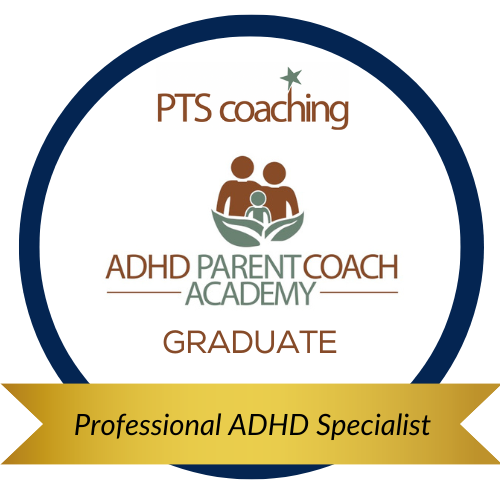Parenting a Child with ADHD: An Overview for Building Understanding and Support
Stephanie Singer | September 26, 2025
Parenting a child with ADHD can feel more demanding and, at times, isolating without research-backed support for both parent and child. ADHD is a neurodevelopmental condition that impacts executive functioning, behavior, self-regulation, and motivation. These differences are not at all related to intelligence – in fact, many children with ADHD show remarkable creativity, aptitude, and originality.
This resource is intended to give parents an overview of ADHD – what it is, how it shows up in everyday life, and the role that connection, structure, and empathy play in raising kids with ADHD. It is also my hope that this content will help parents feel seen and understood, while providing a broad sense of how to better support their child. Caregivers will see the value in meeting children where they are – emotionally, developmentally, and neurologically – rather than where they think they should be, laying the foundation for skill-building and greater confidence within their child.
Understanding the ADHD Brain
In children with ADHD, executive function skills often lag behind in maturation by two to three years due to developmental differences in the prefrontal cortex – the part of the brain that governs planning, organization, and self-control. This difference affects daily life at home and school, as well as peer interactions.
For example, your child might be 10 years old chronologically, but at times respond more like a 7-year-old when it comes to frustration tolerance. This uneven pattern of strengths and struggles is referred to as a jagged profile – illustrating how a child can demonstrate abilities beyond their years in one area while appearing much younger in another.
Executive Function
Executive functions (EF) are often described as the brain’s management system, encompassing skills such as:
- Working memory – holding information in mind and using it (e.g., remembering directions or the steps in a task)
- Inhibitory control – pausing before acting and resisting distractions
- Cognitive flexibility – adapting to changes or shifting perspectives
- Planning and organization – setting goals, managing steps, and keeping track of materials
- Time management – estimating how long tasks will take and staying on schedule
- Task initiation – getting started on tasks and maintaining motivation
- Self-monitoring – checking work, making adjustments, and exercising self-awareness
- Emotion regulation – managing strong feelings and navigating social interactions
Delays in these skills make it much more challenging for kids to consistently demonstrate their knowledge and abilities. For many parents and teachers, these inconsistencies are one of the most puzzling aspects of ADHD – the child who excels at math, but struggles to get papers into their binder; the pre-teen who independently gets ready for school a few mornings in a row, but then unexpectedly has a meltdown at the thought of getting out of bed one morning.
This is not about laziness, carelessness, or lack of discipline. With more sensitive nervous systems, children with ADHD are especially vulnerable to shifts in both their internal state (energy, emotions) and their external environment (noise, transitions, unexpected changes). As a result, a seemingly small change in sleep, stress, or routine can have a marked impact on a child’s ability to meet our expectations on any given day.
This gap between intention and follow-through is captured by Dr. Russell Barkley, a leading expert in the field of ADHD, who explains: "ADHD is not a disorder of knowing what to do, but of doing what you know.”
It's important to note, however, that this is an explanation,
not an excuse. Understanding this aspect of ADHD allows us to respond with intention, proactively guiding our kids as they strengthen the executive function skills that challenge them most. Targeted support and practice are essential for developing these abilities, and with repeated, consistent instruction, kids begin to make notable progress.
Dopamine and Norepinephrine
Just as developmental delays in executive function skills impact a child’s daily life, differences in brain chemistry also have a marked affect on the life of a child with ADHD.
Two neurotransmitters play a central role:
Dopamine drives the brain’s reward system, helping children feel a sense of accomplishment when completing tasks, as well as fueling initiation and follow-through. Individuals with ADHD experience lower levels of dopamine, making it harder to sustain motivation.
Norepinephrine increases alertness and filters distractions. When levels are inefficient, it’s more difficult to maintain focus and consistent effort.
Because these neurotransmitters are less efficiently regulated in the ADHD brain, everyday tasks – brushing teeth, starting homework, or waiting their turn – can require significantly more mental effort and feel exhausting. To stay engaged, children with ADHD often seek stimulation through different avenues depending on their presentation – some through movement, activity, or novelty, and others through quieter absorption, like reading or daydreaming.
These differences also impact how children with ADHD respond to rewards and consequences.
Rewards: Studies indicate that the variations in how dopamine and norepinephrine function make kids less responsive to delayed or long-term rewards. So, reward systems (like sticker charts or token economies) often lose effectiveness quickly unless they are immediate, meaningful, and varied.
Punishments: Research also shows that punitive consequences (like taking things away, scolding, or punishment-based discipline) are usually ineffective in producing long-term behavioral change in children with ADHD. They may stop the behavior in the moment but don’t teach skills or carry over to future situations.
What tends to work best are approaches grounded in connection, immediate and meaningful feedback, and calling out effort and 'wins' in the moment.
ADHD and Intense Emotions
Difficulty with self-regulation – the ability to manage thoughts, emotions, and behaviors – is a defining feature of ADHD. Dr. Russell Barkley has even suggested that ADHD would be more accurately named Deficit in Emotional Self-Regulation (DESR).
Brain science explains why: the amygdala (which reacts quickly to stress or triggers) tends to be more active, while the prefrontal cortex (which helps regulate and calm those reactions) develops more slowly. This imbalance makes emotions escalate more quickly and settle more slowly.
In daily life, this can show up as:
- Heightened reactions to small frustrations
- Sensitivity to rejection
- Difficulty calming down after becoming upset
- Trouble shifting from one task to another
- Becoming “stuck” on a thought, activity, or feeling
- Acting on impulse; a “ready–fire–aim” response
- Benefiting from external support to stay on track
While often mistaken as willful defiance or indifference, these behaviors are more often signs of an overwhelmed nervous system and lagging emotional regulation skills. Viewing challenging behaviors through this lens shifts our response from one of judgment to empathy, curiosity, and skill-building.
When big feelings show up, kids benefit from parents who are able to:
- Be the calm – When you stay anchored in your own regulation, your child’s nervous system can “borrow” your steadiness. Simple actions such as staying “low and slow” (using a softer voice and warm body language) or pausing to take a breath help children return to regulation.
- Validate first – Naming and acknowledging feelings (“It makes sense that you’re upset about leaving”) allow your child to feel seen and understood, which helps bring their “thinking brain” back online.
- Name feelings together – Putting words to emotions (frustrated, disappointed, overwhelmed) quiets a child’s “emotional brain,” moving them from reactivity toward reflection and problem-solving.
- Wonder Why – When your child's actions understandably spark frustration, try to look beneath the behavior and wonder:
What skill might be lagging (flexibility, frustration tolerance, problem-solving, executive function)?
What is my child trying to communicate?
How can I support them in this moment?
Caring for Yourself
It is clear that parenting a child with ADHD requires considerable stamina and ongoing inner work to remain calm, grounded, and empathetic. With the inevitable demands of this role, how you care for yourself directly shapes how you’re able to care for your child. As Dr. Dan Siegel reminds us, “You can’t give what you don’t have.” Tending to your own nervous system lays the foundation for responding with greater calm and connection.
One helpful framework is Siegel’s Healthy Mind Platter, which highlights the different kinds of daily nourishment our minds need – from sleep and downtime to movement, play, and connection. Self-care will look different for every parent, but the goal is the same: choosing practices that genuinely restore you.
It’s equally important to notice the state of your reserves. Every interaction either adds to or drains from your emotional “bank account,” and when those reserves run low, you’re more likely to react than respond. By prioritizing replenishing practices – rest, supportive relationships, and living in authenticity – you protect your ability to stay balanced and show up with the calm and steadiness your child needs.
Words to Carry With You
Parenting a child with ADHD stretches us in unexpected ways, but through a compassionate lens, we can offer what every child deserves – a solid foundation of support and a deep belief in themselves.
It is my hope that these insights from leading experts support you as you continue on this journey:
“The traits often seen as challenges (distractibility, impulsivity, hyperactivity) also carry gifts: creativity, curiosity, and energy.”
Dr. Ned Hallowell – Psychiatrist and ADHD Specialist
“When you see a child differently, you can see a different child.”
Dr. Stuart Shanker – Researcher and author of Self-Reg
“Kids do well when they can. If they’re not doing well, it’s because they’re lacking the skills to meet the expectations being placed on them, not because they don’t want to.”
“Children never choose to be dysregulated – just as you would never choose to have a meltdown. Their behavior is not a choice, but a message that they are unable to cope. What they need is compassion and safety, not punishment or shame.”
Dr. Ross Greene – Clinical Psychologist and author of The Explosive Child
“What we see on the surface is only the tip of the iceberg – to truly understand behavior, we must look beneath it to uncover the underlying needs and factors driving it.”
“Acting out is often reaching out.”
Dr. Mona Delahooke – Child Psychologist and author of
Beyond Behaviors







